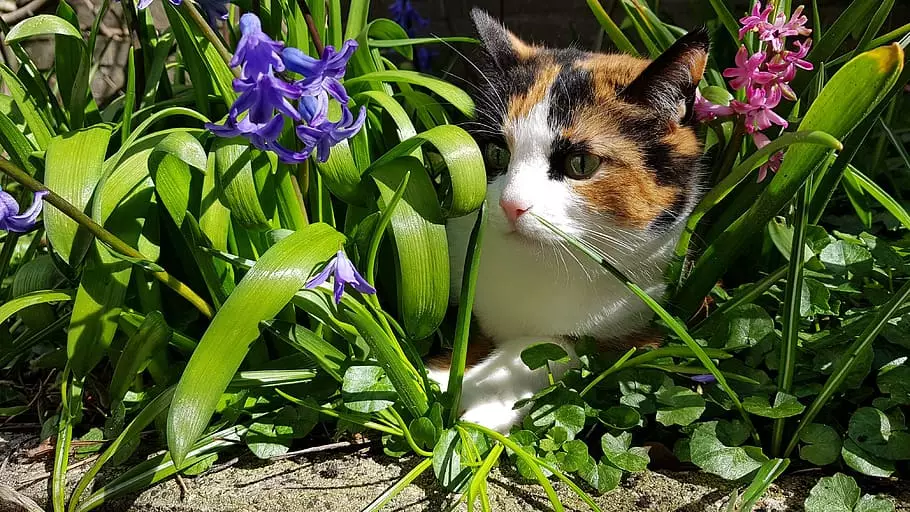As the chill of winter fades and nature awakens, pet owners must stay vigilant about the potential hazards that spring can bring. While the season heralds blooming flowers and longer days, it’s crucial to recognize various dangers that can impact our furry companions. The arrival of spring is a time for enjoyment, but it also necessitates a proactive approach to pet safety.
Beware of Toxic Flora
With the warmth of spring comes an array of vibrant plants and flowers, many of which can pose serious health risks to pets. Renowned for their beauty, species such as snowdrops, daffodils, and tulips are secretly hazardous, potentially leading to severe gastrointestinal distress or worse if ingested. It is essential for pet owners to educate themselves about which plants can harm their pets. For instance, common flowers like hydrangeas and rhododendrons may spark curiosity in pets, but they also carry varying toxicity levels, from skin irritants to potential fatality upon ingestion.
In your gardening enthusiasm, be particularly cautious with bulbs, as they often contain higher concentrations of toxins compared to the rest of the plant. Lilies, in particular, are notorious for being lethal to cats; even contact with pollen can lead to severe health crises.
Before planting this spring, consider researching more pet-friendly flora to ensure a safe and enjoyable garden environment. If a curious paw does venture into the wrong patch, immediate consultation with a veterinarian is critical.
The Buzz About Bees
As flowers bloom, bees will naturally increase their presence, adding another layer of risk for our pets during springtime. While bees are generally indifferent to dogs and cats, a pet’s curiosity can lead to unfortunate encounters. Educating your pets about the ‘leave it’ command can serve as a preventative measure, ensuring that they avoid the sting of an inquisitive bee.
In the event of a bee sting, remain calm. If it’s safe to do so, remove the stinger with a scraping motion—you can use a flat object for this purpose—and apply a cold compress to the affected area. Post-sting reactions can vary from mild discomfort to serious allergic responses. Thus, vigilance is necessary: monitor your pet for any signs of distress, such as swelling or difficulty breathing, and don’t hesitate to contact a veterinarian if you observe alarming symptoms.
Fungal Dangers Among Us
Not all that grows in spring is friendly; wild mushrooms sprout in countless varieties, and while some are harmless, others can be fatal to pets. The appearance of these fungi can become a significant hazard during your outdoor adventures. Consumption of toxic mushrooms can result in severe consequences ranging from digestive upset to neurological symptoms.
If your dog or cat ingests a wild mushroom, don’t wait for symptoms to manifest—act swiftly and take them to the vet immediately. Keeping a mental note of where the mushroom was found can aid in diagnosis and treatment. To safeguard your pets, consider educating yourself on identifying common toxic mushrooms in your area, further protecting your four-legged friends during spring jaunts.
The Ticking Clock: Ticks in Spring
As temperatures rise, the dreaded tick season recommences. These minuscule parasites can latch onto your pet and inflict more than just discomfort; they carry various diseases, including Lyme disease and babesiosis, which can lead to serious health issues.
Regular checks for ticks after your pet has spent time outdoors are essential for ensuring their well-being. These parasites often favor warm, sheltered areas such as ears and armpits, so an all-over examination is vital. Make sure your pets are up-to-date on flea and tick prevention treatments. Having appropriate protection significantly reduces the likelihood of diseases being transmitted.
If you do find a tick, it’s important to remove it properly using a tick-removing tool. Avoid home remedies such as petroleum jelly or alcohol, which can aggravate the situation. The correct removal technique minimizes the risk of infection and promotes better health outcomes for your pet.
As we embrace the joys of spring, it’s important to remember that this vivid season is not without its share of hazards for our pets. By staying informed and vigilant, pet owners can take necessary precautions to protect their companions and ensure a safe outdoor experience. Your responsibility towards your beloved animal extends to understanding the environment and recognizing potential danger. Embrace the warm days ahead, but do so with a watchful eye for your furry friend’s safety.


Leave a Reply